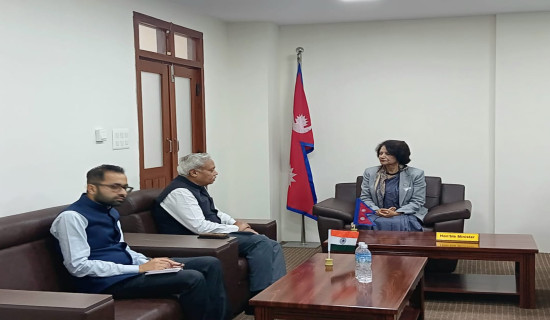- Friday, 28 November 2025
The Future Of Remittances
Millions of people across the Global South leave home in search of more opportunity in richer countries. In the process, they participate in and add to a complex network of globe-spanning economic linkages that operates through migrants’ remittances to the countries they left behind. Yet, hardly a day goes by without Western media highlighting the problem of undocumented immigration. With migrants being portrayed as people who take jobs from locals and cause social unrest, public opinion toward newcomers has soured in destination countries.
Not only is Donald Trump back in the White House, but far-right parties are making gains across Europe. They have come to power in Italy and become decisive forces in French and German politics – a development that tracks the rise of anti-immigrant sentiment in these countries. In 2024, Finland and even Poland (where voters kicked out the previous right-wing government) passed controversial new laws authorizing border guards to turn away asylum seekers. The standard argument against immigration is that migrants are a burden on the state (which may need to provide housing and other social services), that they often fail to integrate into host countries, and that they drive down wages for native workers.
Reality
But the reality is that Western countries need migrants more than ever to fill labour-market vacancies. The remittances migrants send back to their families help to develop their communities of origin, which benefits everyone. Even as political conditions become less hospitable in many countries, technology could have a countervailing effect. Digital wallets, accessed through mobile phones, are now the cheapest way to send money to developing countries, and in places where the financial market is underdeveloped, they may be one of the only options.
While digital remittances have grown rapidly since the pandemic, most remittances are still sent in cash, owing to the oligopolistic nature of the remittances market (where a few providers control their exclusive networks). Nonetheless, officially recorded global remittances reached an all-time high of $822 billion in 2023, three times the amount of official development assistance (ODA). Remittances first exceeded ODA in the 1980s, and the gap has widened steadily ever since, making them the most important financial transfers to many developing countries. According to official data, remittances accounted for more than 30 per cent of GDP in Lebanon, Tajikistan, and Tonga in 2023, and more than 20per cent in 11 other countries. India is the largest beneficiary in absolute terms, receiving more than $100 billion in 2023. These figures under-represent the actual amounts transferred, as a large proportion of remittances are sent through traditional informal channels such as hundi and hawala.
Given the traditionally high costs of sending money internationally, remittances have not yet reached their full potential as drivers of growth and development in lower- and middle-income countries. While fees as a percentage of the amount received have fallen steadily since 2011, the average cost of sending $200 is still $12.50, or about 6.3 per cent. This is twice the target set by the Sustainable Development Goals. Hitting the SDG target could increase remittances substantially. In a 2021 study, my co-authors and I found that a 1 per cent reduction in the cost of sending $200 leads to an increase in remittances of about 1.6 per cent. Lower transaction costs not only increase the volume of remittances but also increase financial inclusion by diverting remittance flows from informal to formal channels.
True, technological advances in automation, artificial intelligence, and robotics could reduce demand for low-skilled migrant labour in developed economies, in turn affecting remittances. A 2009 study suggests that countries that send a larger share of low-skilled migrants abroad receive more remittances per capita than countries that send a larger share of high-skilled migrants. Still, there are many occupations – such as truck drivers, nurses, cooks, or builders – that cannot be automated with current technologies.
Migration and remittance flows are also being influenced by demographics and other broader trends. As the frequency and severity of natural disasters increase, climate-induced migration could reshape the global labour market in the coming decades. Worsening droughts, floods, and other natural disasters will leave many people in vulnerable regions with no choice but to migrate in search of habitable conditions. Such displacements are already observable in parts of Africa, Asia, and Latin America. These evolving migration patterns could create new challenges for both source and destination countries, requiring more international cooperation and new policy responses. Research indicates that remittances do tend to increase in response to natural disasters in the countries of origin, thus providing a financial buffer and helping households maintain consumption in the medium term.
At the same time, aging populations in many developed economies – particularly in Europe, Japan, and the United States – could boost demand for migrant workers in sectors such as health care, eldercare, and social services. Notwithstanding the current political mood in many countries, these demographic pressures may lead to policy adjustments such as an increase in work permits for migrant labourers (Japan has already taken this step). That would serve migrants and source countries alike. Research shows that remittances are used not only to cover basic needs but also to invest in education, which can drive long-term economic growth. While some argue that migration leads to a brain drain in developing countries, this loss can be more than offset by the dynamic gains from remittances, returning emigrants, and other factors.
Benefits
Given this potential, circular and temporary migration programmes should be seen as an important part of the development-policy toolkit. Research in Malawi shows that temporary international migration and remittances can benefit rural labour markets in the long run. Districts that received more migrant capital experienced a shift from agriculture to capital-intensive non-farm services, and, over time, they accumulated greater physical and human capital than others. Another study has established that well-regulated temporary migration is a practical way for all communities to accumulate capital.
By focusing attention on enhancing international migrants’ ability to invest in their children’s education and non-farm capital, labour-rich developing countries may be able to generate lasting and positive effects on the structure of their economies. Migration and remittances have a positive impact on the long-term economic performance of source countries. Those in wealthy, industrialised countries should recognise not only that migrants will play a crucial supporting role in their own economies, but also that boosting remittances is one of the best ways to reduce inequality between countries and foster regional and global stability.
(The author is a professor at the University of Göttingen)
- Project Syndicate








-square-thumb.jpg)








